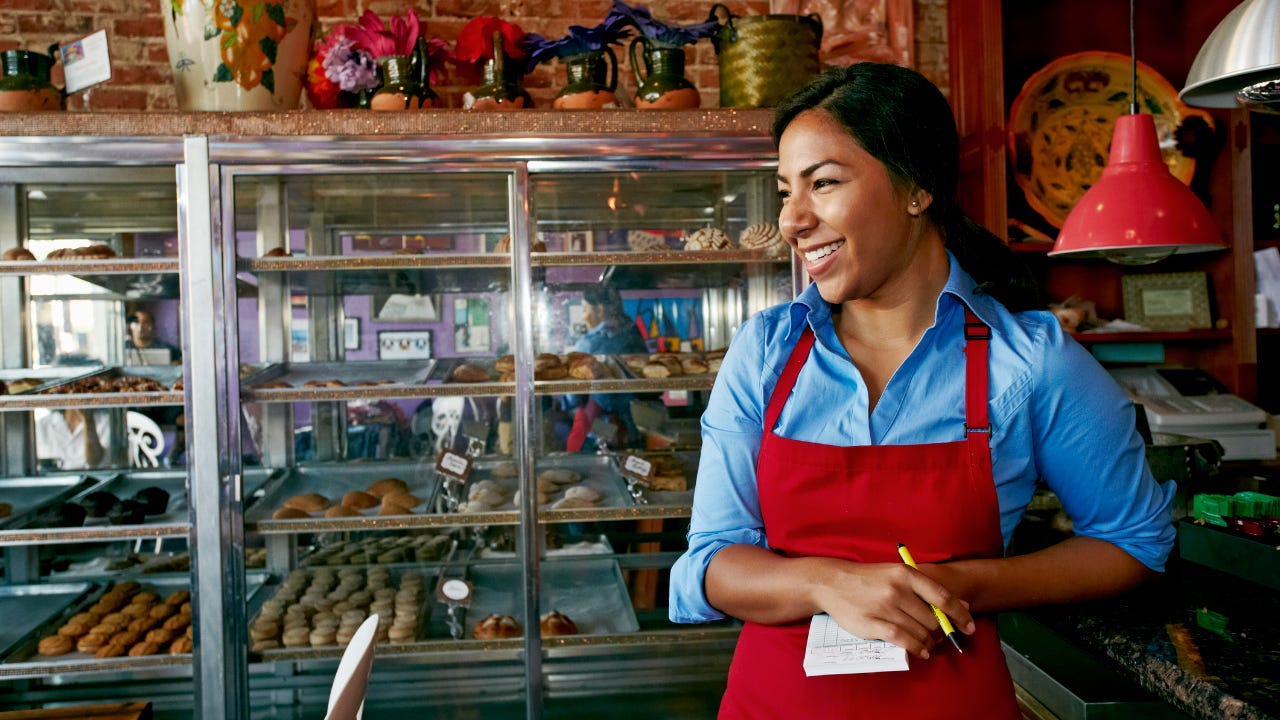SBA Community Advantage loan: How to qualify and apply

According to the Federal Reserve’s 2022 Report on Firms Owned by People of Color, minority business owners are more likely to apply for conventional business loans. Yet a higher percentage of minority owners get denied traditional financing.
For example, 61 percent of businesses owned by people of color are denied by large banks and 55 percent are denied by small banks. Meanwhile, 51 percent of white-owned businesses get denied by large banks and 30 percent by small banks. The report shows that minority businesses are more likely to face financial challenges and need funding.
To make financing more accessible, SBA Community Advantage lenders often support minority-owned businesses, women, veterans and low-income communities through loan and mentorship programs. Let’s dive into how the specifics of Community Advantage loan program works.
Key takeaways
- The Community Advantage loan supports underserved communities like low-income areas
- It’s an SBA 7(a) loan with loan amounts up to $350,000
- Community Advantage loans are offered through mission-based lenders like CDCs and CDFIs
- CA lenders aren’t common, so there’s extra legwork to find and apply
What is the Community Advantage loan?
The SBA created the Community Advantage loan pilot program to offer 7(a) loans up to $350,000 to underserved businesses. Businesses are usually in a financially at-risk community or may be startups or owned by minority business owners, women or veterans. These businesses might be denied for the standard 7(a) loan because many lenders tighten their criteria for SBA loans due to their capped interest rates and long repayment terms.
To serve these communities, the SBA CA program uses lenders that wouldn’t normally qualify to offer standard 7(a) loans, usually nonprofits with a mission to boost community development. The SBA recently extended the program’s expiration date to September 30, 2024, according to the Federal Register.
But as of April 2023, Community Advantage lenders can also apply to become a Community Advantage Small Business Lending Company (SBLC). This provides the lender with a license to serve disadvantaged communities under the 7(a) loan program on a nontemporary basis.
According to the SBA 7(a) summary report, so far in 2023:
- The majority of SBA Community Advantage loan approvals (44.5%) are for loan amounts between $50,000 and $150,000
- The majority of SBA CA funds have been given to startups (47.1%) and businesses that have been open for more than two years (33.8%)
- 90.1% of SBA CA funds support businesses in urban communities
- Most funds have gone to the following industries: accommodation and food services (21.9%), health care and social assistance (12.4%), and retail trade (10.6%)
- Male-owned businesses have received 51.9% of SBA CA funds
- White business owners have received 44.7% of SBA CA funds compared to Hispanic (17.6%), Black (16.7%), Asian (11.2%) and Native American or Alaska Native (1.1%) business owners and 8.7% that fall into the unanswered demographic
How does the SBA Community Advantage loan work?
The SBA Community Advantage loan can be used for similar purposes as a standard 7(a) loan, including:
- Working capital
- Commercial equipment
- Commercial real estate
- Refinancing debt, in some cases
- Business ownership changes
- International trade
It offers many of the same perks as the 7(a) loan: competitive interest rates and long repayment terms. What to expect when you get this type of SBA loan:
| Community Advantage loan features | Amount |
|---|---|
| Maximum loan amount |
|
| Maximum interest rates |
|
| Repayment terms |
|
| Collateral |
|
| Maximum SBA guarantee |
|
SBA Community Advantage loan requirements
The Community Advantage loan program follows the same rules and guidelines as the standard 7(a) program. While it’s designed to make 7(a) loans accessible to underserved business owners, not every business will qualify.
The Community Advantage loan requirements include:
- For-profit business
- Does business in the U.S. or U.S. possessions
- Small business by the SBA definition
- No current delinquencies for debts to the U.S. government
- Be reasonably able to repay the loan
- Doesn’t qualify for other types of funding, including using personal assets
In addition to these requirements, Community Advantage loans are available to businesses in:
- Communities with low-to-moderate income
- Rural areas
- Specific zones like underutilized business zones
- Startup phases, such as those under two years in business
- At least 51 percent owned by a veteran
Ineligible businesses
These businesses won’t be eligible for a Community Advantage loan:
- Any business with illegal activities
- Companies involved in gambling
- Dealers of rare coins and stamps
- Real estate investment firms
- Lending institutions
- Speculative business models
- Multilevel marketing businesses
- Government entities
- Religious or charitable organizations
Where to find SBA Community Advantage loans
You can get Community Advantage loans through a variety of approved lenders, including:
- Certified Development Centers (CDCs). CDCs are community-based nonprofits approved by the Small Business Administration to offer SBA 504 loans. Use the SBA’s local assistance tool to find CDCs near you.
- Microloan lenders. These nonprofit and community-based lenders participate in the SBA’s Microloan program. You can use the SBA’s list of microlenders to find lenders that match your business’s purpose and vision.
- Intermediary Lending Pilot (ILP) program intermediaries. These intermediaries are nonprofit organizations approved by the SBA to offer loans up to $200,000 to startups or growing small businesses. Each ILP is given $1 million in funding for this purpose.
- Community Development Financial Institutions (CDFIs). CDFIs are community-based organizations with the primary purpose of developing specific underserved communities. Only non-federally regulated CDFIs can offer Community Advantage loans, such as loan funds and venture capital firms. You can find a list of certified CDFIs on the CDFI Fund website.
How to apply for the SBA Community Advantage loan
Applying for an SBA Community Advantage loan takes a few extra steps to research because Community Advantage lenders aren’t common and they serve specific communities. How to get started:
- Find a Community Advantage lender. Use the SBA tools to find a CDC or microlender near you, or look for a certified CDFI through the CDFI Fund.
- Look through that lender’s eligibility criteria. Community Advantage lenders may focus on specific communities, such as serving minority groups and underserved businesses.
- Start your application. Community Advantage lenders may have an online application, or you may have to call the lender to get started.
- Send in required documentation. Lenders will need your personal and business financial statements, tax returns, business plan, bank statements and may need proof that your conventional funding was denied.
- Work one on one with the lender. The lender will contact you to let you know if your loan application is approved, typically within 10 days. Community Advantage lenders may enroll you in their programs involving mentorship and resources to support your growth.
Bottom line
The Community Advantage loan program was created to support underserved businesses that may not qualify for the standard 7(a) loan. You get the benefit of competitive interest rates and terms, and flexibility to use the loan for working capital or even international trade. The SBA also raises the loan amounts that don’t require collateral to $50,000, up from $25,000 maximum for the standard 7(a) loan program.
The other main benefit is that you get to work one-on-one with a mission-based lender focused on helping your business succeed. These Community Advantage lenders may provide education or mentorship programs to walk you through your business’s journey.
If you can’t get financed through the Community Advantage loan pilot program, you may be eligible for grants, including grants offered to minority businesses. You could also try alternative financing that widens the scope of businesses eligible to apply.
Frequently asked questions
-
A Community Advantage loan is a type of SBA 7(a) loan offered under the Community Advantage loan pilot program. It provides loans up to $350,000 to underserved communities, such as businesses in low-income areas.
-
A CDFI loan is a business loan offered through a Community Development Financial Institution. CDFIs are certified by the CDFI Fund and are committed to developing the community, often offering education and other resources to support small business owners. They may lend to startups and underserved businesses that wouldn’t normally qualify with traditional lenders.
-
The communities served by SBA programs are different for each program but can include:
- Underserved communities like minorities, women or veterans
- Low-to-moderate income communities
- Other financially distressed communities, such as those designated as Promise or Opportunity Zones
- Rural areas
- Historically Underutilized Business Zones
- Startup businesses under two years old
You may also like

American Express® Business Line of Credit vs. Fundible

SBA loan denied: What to do next




